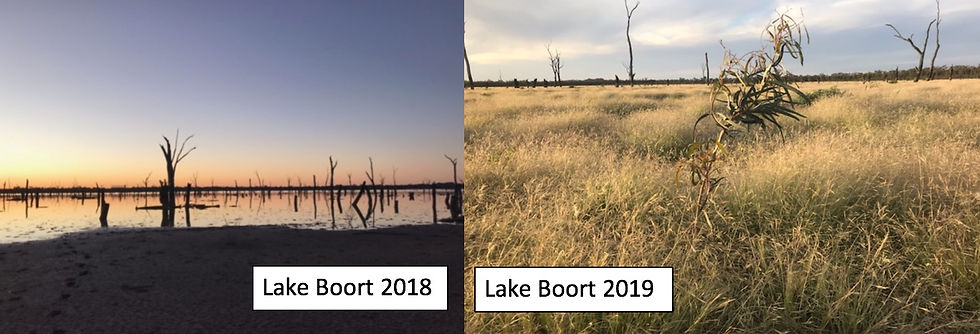How Dry is Dry? How "Sustainable" Can a Shooting Season Be?
- Regional Victorians Opposed to Duck Shooting Inc.

- Mar 15, 2019
- 2 min read
Updated: Dec 7, 2019

Yesterday The Age reported "Duck numbers are in Crisis" with good reason.
Australia's native waterbirds are at perilously low numbers, many species, including those unique to our country, having been on a steady decline for years. (Centre for Ecosystem Science, University of NSW)
Record heat and dry spells are stressing them further.
Sadly, many of Victoria's waterways are now dry.

Remaining native waterbirds are being forced to congregate at areas where there is some water, only to be easy targets for recreational duck shooters starting tomorrow.
In the past, birds could try to escape the shooters by flying to nearby dams. This year dams are dry.

There is little refuge for our struggling native waterbirds, who will often remain together in "family units" through the gunfire to their pitiful ends.
Duck shooters apparently fail to realise the logical impact of shooting on our waterbirds and that it's not just the hundreds of thousands of birds shot that are impacted.
There is a ripple effect through the species. Otherwise healthy birds and birds of breeding age are shot, reducing the chances of population recovery.
Further, many species pair for life. When one is shot, it is likely any offspring won't survive, but also the remaining partner may never recover or re-mate.

Why decision makers heed advice of a small group of duck shooters over independent expert scientists or independent public opinion polls, is a mystery.
We can only hope - for the sake of our children's ability to enjoy the wildlife we do today - that duck shooters will demonstrate respect for sustainability and leave our birds alone this year.
It's about protecting our unique wildlife and the prosperity they could bring to our rural communities through tapping into nature based tourism which is booming elsewhere.
Top Picture Cairn Curran - where not much exists now except blue-green algae; toxic to people and animals.




Comments